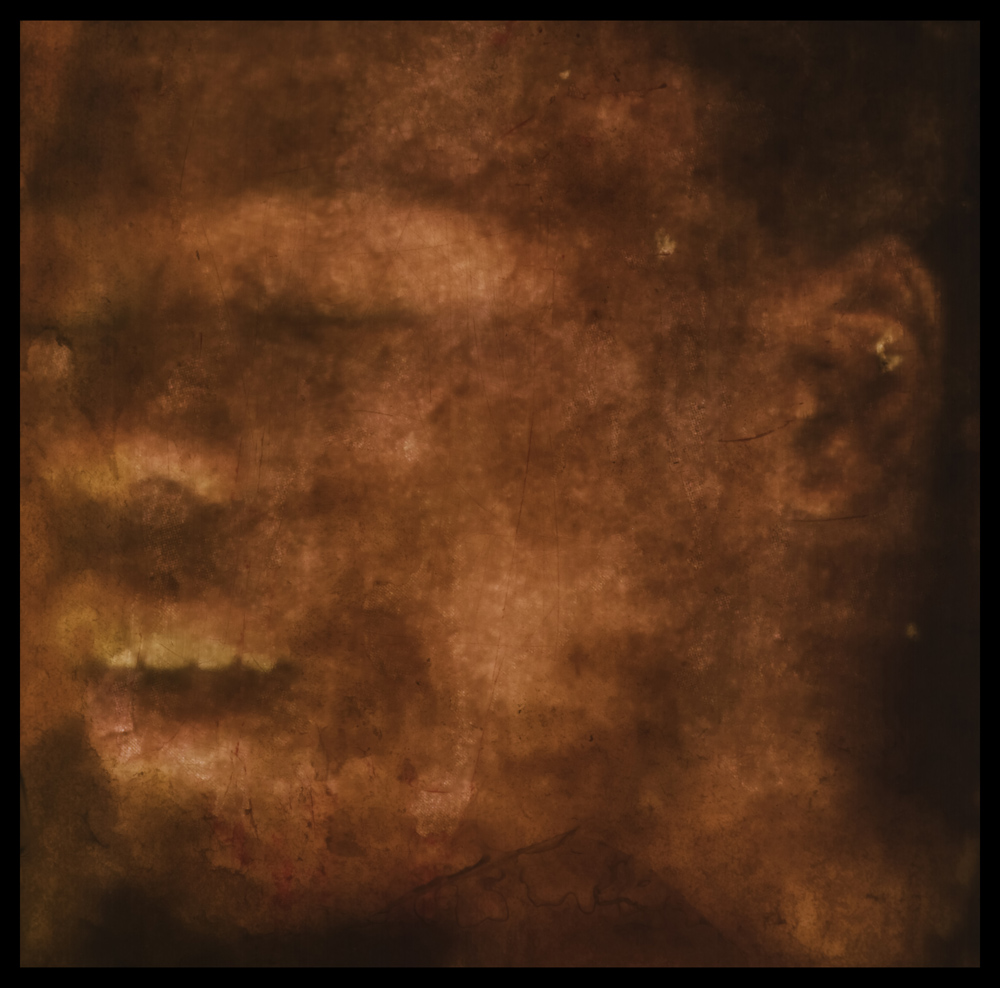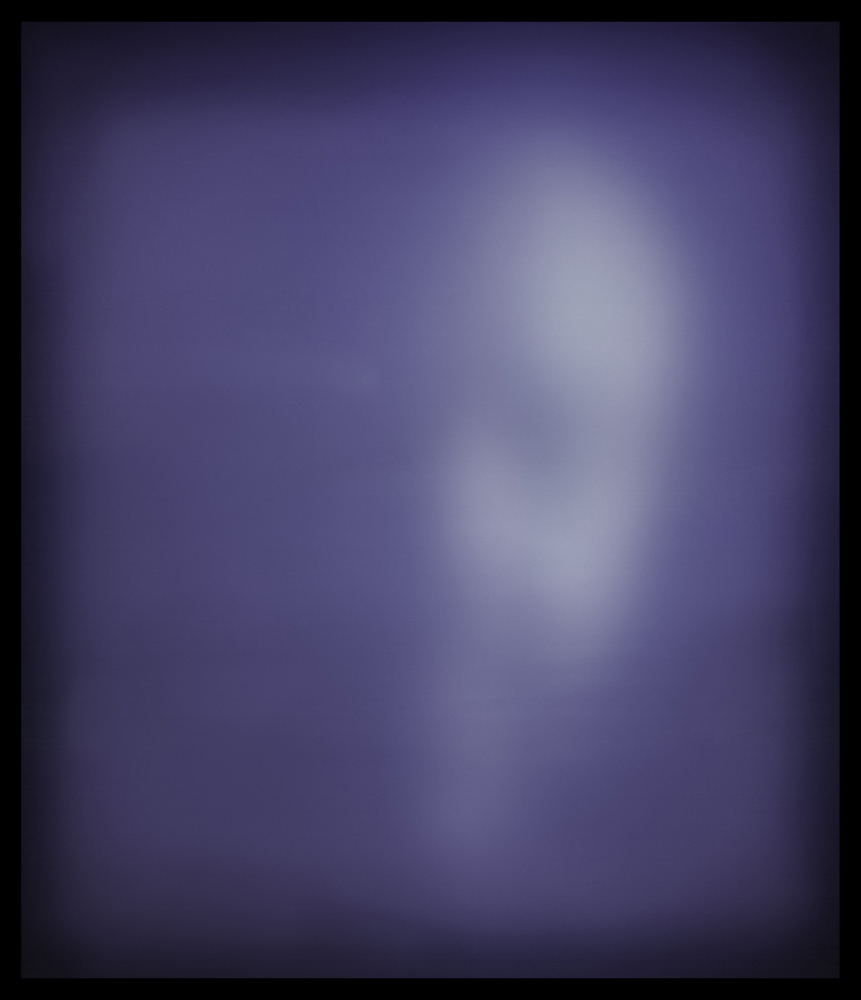Frederic Weber: Memento Mori and Primary Light
From Momento Mori: For all their brilliance, Frederic Weber’s fiery gold and red Cibachrome photographs are somber and disturbing. Although contemporary in spirit, there is something anachronistic about these pictures. The heads preserved in these images are trapped in amber. It is as if they are ancient phantoms reappearing after thousands of years, now uncovered by the photographer-cum-archaeologist. The heads appear to have decayed. However, like the Pompeiian figures trapped by Vesuvian lava, we can make out their final expressions and gestures. These photographs conjure a past that never was. But because they are photographs and photographs tell the truth we are convinced otherwise.–Adam Weinberg Curator Permanent Collection, Whitney Museum of American Art
Frederic Weber approaches photography like an archaeologist in reverse. Instead of peeling away the layers of history to reveal the origins of an object or subject, Frederic adds layers “of time and process that result in traces of energy and beauty of what is left behind.” Frederic recently showed selections from two bodies of work at The Klompching Gallery, Memento Mori and Primary Light. Both series reveal photographs that don’t always look like photographs and speak to the history of the medium.
Both bodies of work are produced as Ilfochromes, a photographic process introduced in the 1960s, that is well known for its rich highly-saturated colors and can often appear like they are lit from within. Despite many digital enthusiasts objections, a well printed Ilfochrome, properly displayed, is still unrivaled for its beauty in all color photographic printmaking.
Selected pieces from both Memento Mori and Primary Light will be included this fall in a show, Generosity of Spirit, at USC Fisher Museum in Los Angeles curated by Tim Wride, Sarah Ross Soter Curator of Photography at the Norton Museum of Art. Generosity of Spirit opens September 13th and runs through December 3rd, 2016.
Frederic Weber lives and works in Nyack, NY. His photographs have been reproduced in several publications including Art + Auction, Aperture, Flash Art, The New Yorker, The New York Times and more recently, The Unseen Eye: Photographs from the W.M. Hunt Collection (Aperture, 2011). Weber’s artworks are represented in several museum collections, including the Whitney Museum of American Art, the George Eastman House, Los Angeles County Museum of Art, Museum of Fine Arts Houston, as well as many private collections such as Manfried Heiting, Bill Hunt, and the Bidwell Collection.
Memento Mori is constructed from a combination of images, that the artist has excavated from comic books, magazines, newspapers, television, paintings and other printed matter. He presents images of tightly cropped heads of black and African subjects, presenting them almost as relics of a time past. The photographs are challenging, almost visually overwhelming, and difficult to fix within a specific framework. At once iconic, they echo historical post-mortem imagery, with a timestamp that is not fixed or even knowable. The originals are made of several layers of different images on glass plates and printed on to Ilfochrome sheets. The resulting photographs are rich in color and painterly.
From Primary Light: With his new-soft-focus images of bodies and heads, Weber strays further into territory already colonized By Bill Jacobsen. But he distinguishes himself with the variety of his rich monochromatic toning and the peculiar intensity of his regard. As with his last show, the work has an almost fetishistic quality, it seems to spring from the desire to capture and preserve, and tightly frame an evanescent emotion, a dissolving memory. Most of Weber’s subjects appear lit from within, some with a lovely fading light, others glowing so brightly they’re all but consumed in a burst of white-hot energy–Vince Aletti, Voice Choices
The Primary Light series share this painterly quality. Here though, it is the reference to photography’s Pictorialism past, that is most evident. Weber presents torsos and heads that are rendered in soft-focus, with each emerging from a depth of blue so saturated, the color transforms into an abyss, out of which the human forms glow like fire-flies. The ghostly figures seem nostalgic, classical even and partly unknowable.
For inquiries about print sales contact Klompching Gallery, New York.
Posts on Lenscratch may not be reproduced without the permission of the Lenscratch staff and the photographer.
Recommended
-
Ragne Kristine Sigmond: Portraits of Painterly LightDecember 2nd, 2025
-
Mary Pat Reeve: Illuminating the NightDecember 1st, 2025
-
Ricardo Miguel Hernández: When the memory turns to dust and Beyond PainNovember 28th, 2025
-
Pamela Landau Connolly: Columbus DriveNovember 26th, 2025
-
MATERNAL LEGACIES: OUR MOTHERS OURSELVES EXHIBITIONNovember 20th, 2025







































































